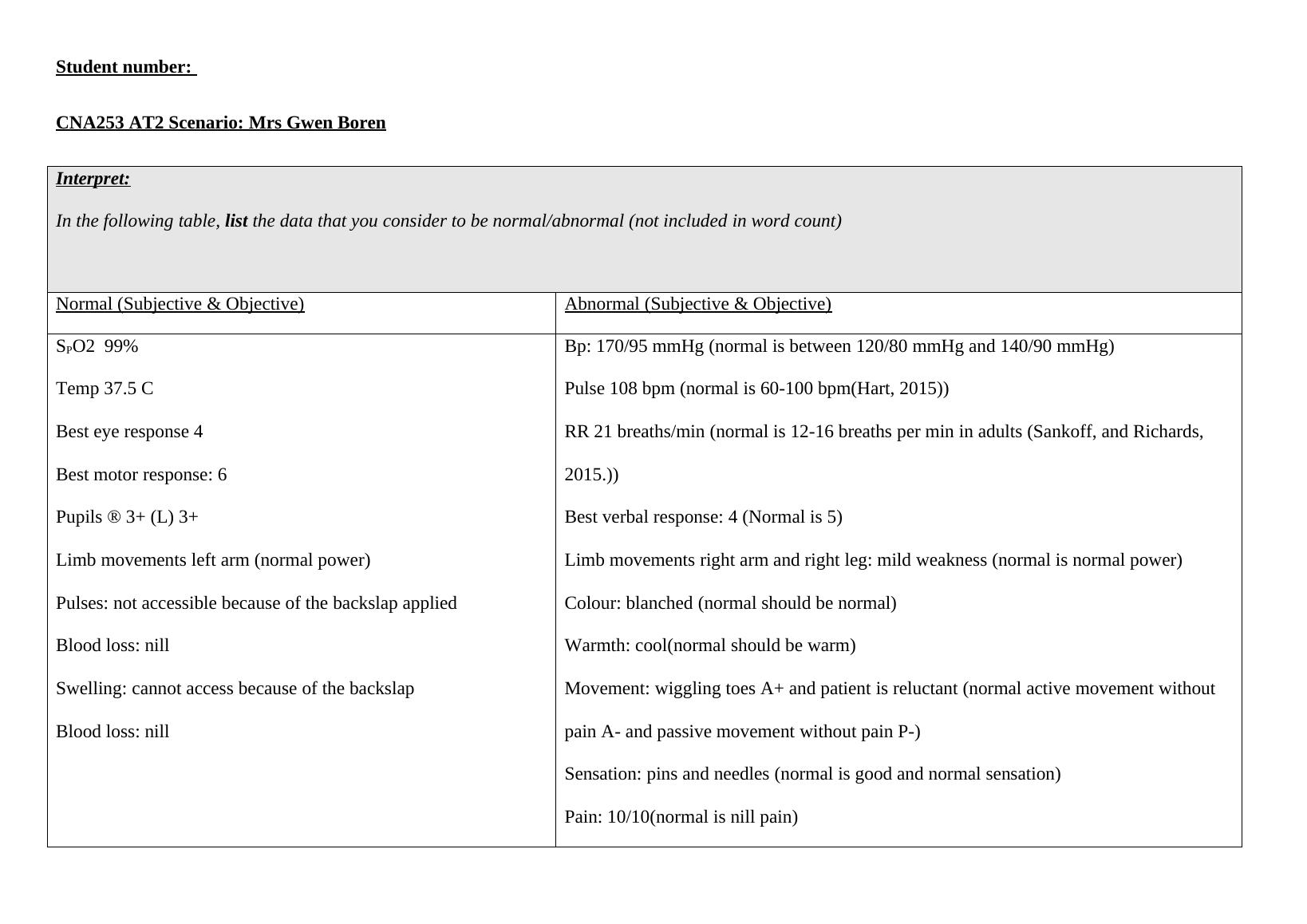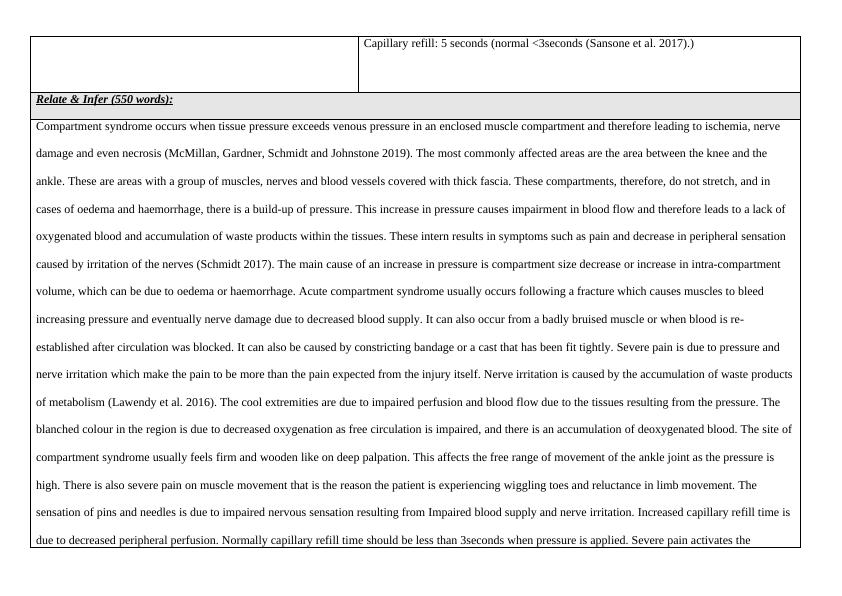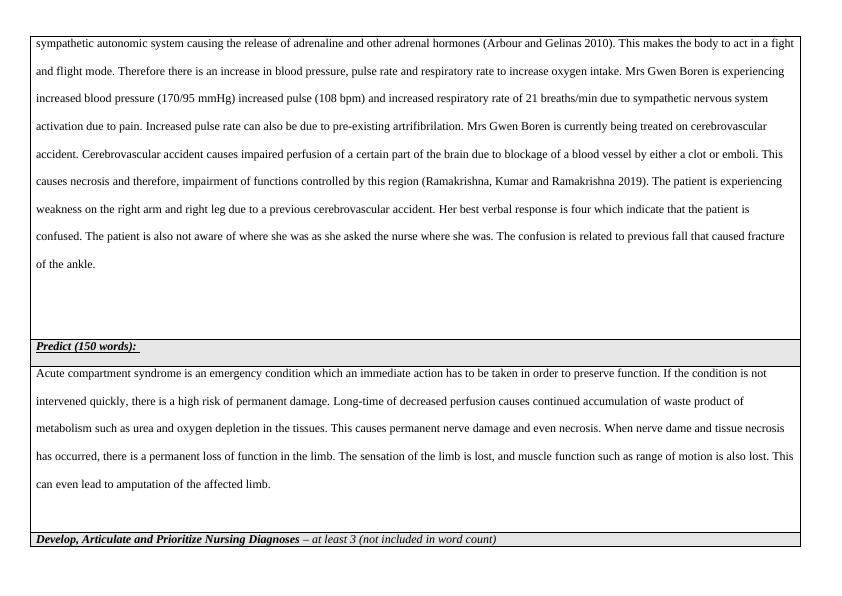CNA253 AT2 Scenario: Mrs Gwen Boren Assignment 2022
Collect normal and abnormal data, explain the pathophysiology behind symptoms of compartment syndrome, and discuss the possible causes of hypertension in a patient. In-text references required.
8 Pages2244 Words10 Views
Added on 2022-08-25
CNA253 AT2 Scenario: Mrs Gwen Boren Assignment 2022
Collect normal and abnormal data, explain the pathophysiology behind symptoms of compartment syndrome, and discuss the possible causes of hypertension in a patient. In-text references required.
Added on 2022-08-25
ShareRelated Documents
End of preview
Want to access all the pages? Upload your documents or become a member.
Pain Management with Morphine for Compartment Syndrome after Lower Limb Fracture
|8
|1886
|307
Normal/Abnormal Data in the Physical Conditions
|6
|2240
|18
What do you consider to be normal/abnormal?
|6
|2541
|15
Compartment Syndrome and Lower Leg Fracture: Nursing Management and Pharmacological Interventions
|8
|1140
|406
Case Study - Spinal Cord Compression
|7
|1528
|18
Health and Homeostasis
|5
|945
|366



